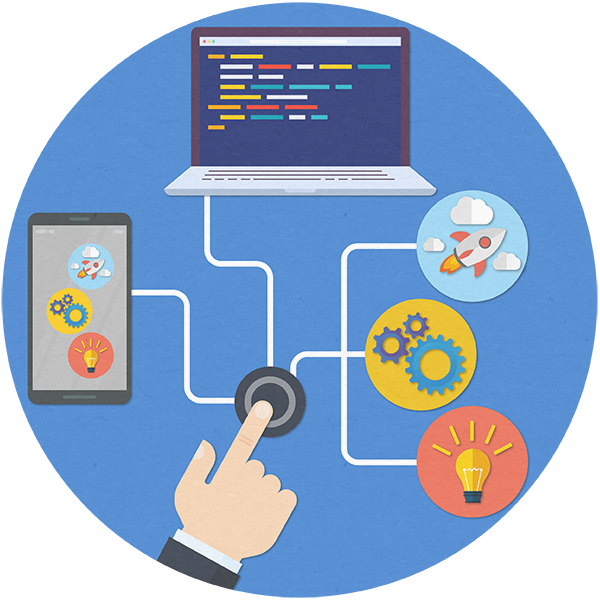'Low Code' Development Platform
What is a 'low code' development platform? How does Microsoft Power Platform utilise this low code approach to make the Power Platform accessible to users with little development experience?

See the solutions we've developed using Power Apps

What is 'low code' development?
Low code development platforms give less experienced software developers the ability to write business applications quickly. These platforms do this through drag-and-drop functionality, disguising the 'real' code underneath and reducing the technical knowledge required.
Microsoft Power Apps is built upon this idea, where the citizen developer can use the drag-and-drop functionality to quickly and easily build an app. This is also true of the other products in the Power Platform, including Power Automate and Power Pages, where drag-and-drop is standard.
See the different types of Power Apps
The history of low code development
Low code isn’t new. Early examples have existed underneath a number of business applications to enable easy customisation of these applications. C/AL that underpinned Navision was, arguably, one early example.
Many companies used early versions of Microsoft CRM as a low code platform. They were developing interesting solutions, ranging from student record systems to asset tracking systems that manage fighter planes and tanks.
However, it took Salesforce and their Lightning platform to bring low code development out from the shadows to really create a new category, at which point the market really hotted up.
Got any questions regarding low code development?

Microsoft and Power Apps
To challenge Salesforce and their Lightning platform in the brand new market of low code applications, Microsoft developed their Power Apps platform. Amazon anticipated this threat and launched Honeycode.
There are other more established vendors, for example Mendix, Pega, Appian, Outsystems. All of these examples have mature products that have been around for a while. However, we would suggest that this will be a three or four horse race. Lining up in the stalls are:
- Salesforce with Lightning
- Microsoft with Power Apps
- Amazon with Honeycode
- Oracle with Apex/VBCS

The infrastructure of low-code development
Microsoft has a very large public cloud platform (Azure), business applications (Dynamics 365), personal productivity apps (Office), and a very large partner community with thousands of staff that exist to serve small to midsize businesses (SMBs).
As for the others, Amazon has a very large public cloud platform (AWS) and a fast-developing channel of SMB partners. Salesforce has some business apps and a limited SMB channel. Oracle has business apps and almost no SMB channel.
Whilst Amazon, Salesforce and Oracle all can and do integrate their low code platforms with Microsoft Office – nobody does this as well as Microsoft.

Who will win?
Who will win? No single vendor will own the market. The addressable market is huge. There will be more than enough room for a number of vendors to be successful. Competition will be intense. Vendors will spend lots of time and money making their case. Customers should not allow themselves to be confused.
- The cost of a low code development platform is less relevant than the cost of the professional services required to make great use of it.
- The cost of the professional services required is directly related to the extent to which skilled resources are widely available.
- The number of days professional services required is directly related to the range and capability of pre-packaged connectors to other applications.
It is on this basis that we think Microsoft and Power Apps are well placed.
.png)